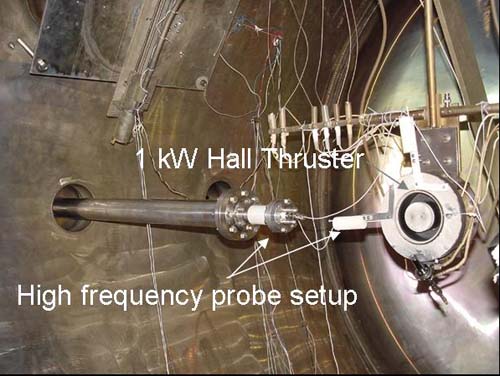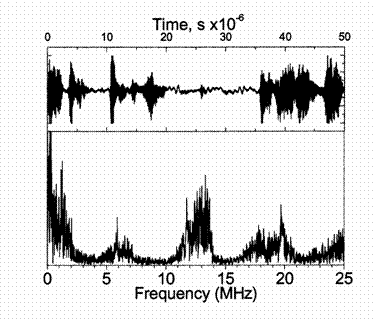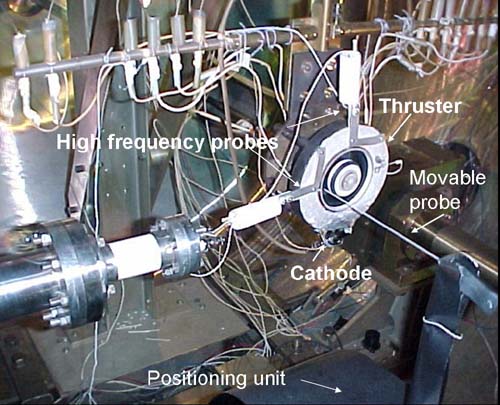Waves and Instabilities in Cross-Field Discharges: High Frequency Oscillations in Hall thrusters
High-frequency oscillations (1-100 MHz) in Hall thrusters have apparently eluded significant experimental scrutiny. A diagnostic setup, consisting of single-tip Langmuir probe, special shielded probe connector-positioner (left figure), and electronic impedance-matching circuit was successfully built and calibrated. Through simultaneous high-frequency probing of the Hall thruster plasma at multiple locations, high-frequency waves have been identified and characterized. For various thruster operating conditions the detected waves are determined to propagate in the azimtuhal direction inside the thruster channel. The presence of several modes with multiple frequencies (right figure) as well as the relation of the wave phase velocity to the electron azimuthal drift velocity suggests that the detected modes manifest the Rayleigh-type instability, which has been predicted in our theoretical study.

Single-tip Langmuir probe diagnostic setup |

Rayleigh-type instability modes |

This high frequency oscillation diagnostic setup was used in studies of the effects of segmented electrodes and plasma instabilities in a 9 cm Hall thruster. All diagnostic tools were installed inside a 28m3 vacuum vessel equipped with a diffusion pump (12,000 l/s for Xenon gas).